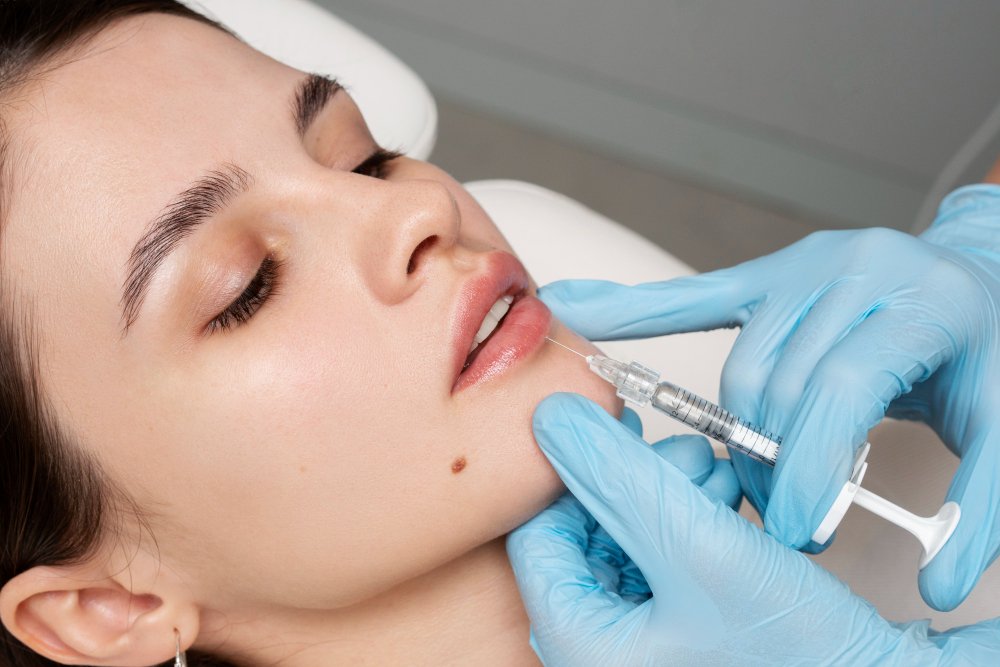Treatment Overview
Geometric Osteotomy Zygoma Reduction is an advanced facial contouring surgery designed to reshape and reposition the cheekbones (zygoma) with high precision. Unlike conventional zygoma reduction methods, this technique uses geometric calculations to create an exact cutting and repositioning plan for the zygomatic bone, ensuring symmetrical, natural, and stable results. Korea is globally recognized for pioneering this method due to its combination of digital surgical planning, minimal-incision approaches, and high patient satisfaction rates.
Purpose & Benefits
The main purpose of Geometric Osteotomy Zygoma Reduction is to:
- Reduce the prominence of wide cheekbones.
- Correct facial asymmetry caused by uneven zygomatic projection.
- Create a smoother, more balanced facial contour.
- Maintain natural expressions without stiffness.
- Achieve stable, long-lasting results with minimal risk of relapse.
Key Benefits:
- Highly precise bone repositioning for perfect symmetry.
- Reduced swelling and faster recovery compared to older methods.
- Minimal scarring due to hidden incisions.
- Improved facial harmony from both frontal and side views.
Ideal Candidates
You may be an ideal candidate if you:
- Have prominent or wide cheekbones that make your face look broad.
- Experience facial asymmetry involving the zygoma.
- Desire a more V-line or oval facial contour.
- Are in good health with no serious medical conditions.
- Have realistic expectations about surgical results.
Possible Risks & Complications
While Korea’s surgical expertise minimizes risks, potential complications may include:
- Temporary swelling and bruising.
- Numbness in the cheeks (usually temporary).
- Infection at the incision site.
- Bone instability if post-surgical care is neglected.
- Rare cases of asymmetry requiring revision.
Surgical Techniques Used
In Korea, surgeons use a geometric bone cutting method guided by 3D CT scans and surgical simulation software.
Common techniques include:
- L-Shaped or Arch Osteotomy: Cutting and repositioning the zygoma in a precise geometric pattern.
- Digital Surgical Planning: Using simulation to pre-determine bone cuts and angles.
- Endoscopic Assistance: Minimizing incision size and tissue trauma.
- Internal Fixation with Titanium Plates: Ensuring stable bone repositioning.
Recovery & Aftercare
- Hospital Stay: Usually 1 day for monitoring.
- Initial Recovery: Swelling peaks within 2–3 days, subsiding significantly in 1–2 weeks.
- Full Recovery: 4–6 weeks for bone healing.
- Aftercare Recommendations:
- Cold compresses during the first 48 hours.
- Avoiding hard foods for 2–3 weeks.
- Regular follow-ups for X-ray or CT scan evaluations.
- Oral hygiene care to prevent infection at incision sites.
Results & Longevity
- Visible Results: Immediate improvement in facial contour, becoming more refined over 1–3 months.
- Longevity: Permanent, as the bone structure is physically altered.
- Natural Look: Korean surgeons focus on maintaining natural facial expressions while improving symmetry.
Treatment Process in Korea
- Initial Consultation & 3D Analysis
- Patient undergoes CT scanning and 3D facial simulation.
- Surgeon maps geometric cutting lines tailored to facial proportions.
- Pre-Surgical Preparation
- Health screening, blood tests, and dental X-rays (to check bite alignment).
- Discussion of incision placement to avoid visible scars.
- Surgery Day
- General anesthesia administered.
- Geometric bone cutting performed with endoscopic guidance.
- Internal fixation using titanium plates for stability.
- Immediate Post-Op Care
- Ice packs, pain control medication, and swelling management.
- Short-term hospitalization for monitoring.
- Follow-Up Visits
- 1 week: Suture removal (if external sutures are used).
- 1 month: Bone healing check via X-ray or CT scan.
- 3 months: Final symmetry evaluation.
Why Korea is a Top Destination for This Surgery:
- Innovative Surgical Technology – 3D simulation, minimal-scar approaches, and ultrasonic bone-cutting devices.
- High Patient Satisfaction – Korea has some of the highest success rates in zygoma surgery globally.
- International Expertise – Surgeons regularly treat patients from the US, Europe, and the Middle East.
Cost Range
The cost of Geometric Osteotomy Zygoma Reduction in Korea typically ranges between ₩7,500,000 – ₩14,000,000 KRW (approx. USD 5,800 – 10,800), depending on:
- Surgeon’s experience and clinic reputation.
- Use of advanced 3D simulation technology.
- Case complexity (simple reduction vs. asymmetry correction).
- Inclusion of other contouring procedures (V-line, chin surgery, etc.).
Cost Breakdown Example:
- Consultation & Imaging: ₩200,000 – ₩400,000 KRW
- Surgical Fee: ₩6,500,000 – ₩12,000,000 KRW
- Anesthesia & Hospitalization: ₩800,000 – ₩1,200,000 KRW
- Follow-Up & Medication: ₩200,000 – ₩400,000 KRW
Popular Clinics in Korea
- Banobagi Plastic Surgery – Known for precision bone contouring and 3D planning.
- ID Hospital – Famous for full facial harmony surgeries.
- DA Plastic Surgery Clinic – Specializes in minimal-scar zygoma procedures.
- View Plastic Surgery – Offers multi-language services for international patients.
- JW Plastic Surgery – Known for high patient satisfaction in bone contouring.




